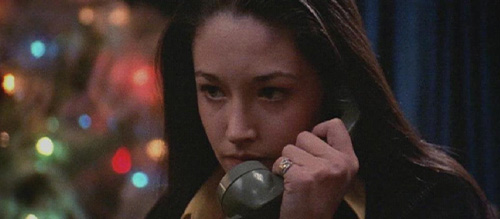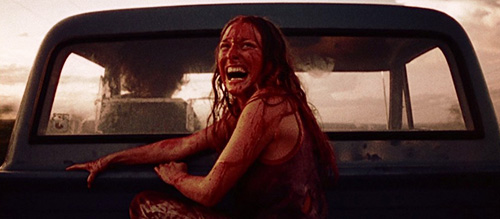Ten Women Who Defined and Evolved Horror’s Final Girl Trope
In 1992, Carol J. Clover published her seminal work, “Men, Women, and Chainsaws: Gender in the Modern Horror Film”, a deep exploration of occult, rape-revenge, and slasher movies, in which she referred to the only character left alive at the end – the only one who survives – as the “final girl.” Clover described the final girl as the one, “…who is cornered, wounded; whom we see scream, stagger, fall, rise, and scream again. She is abject terror personified.”
The final girl was a response to many political and cultural shifts during the 1970s and quickly became a staple of the genre. Over the decades, final girls have been many things: victims, virgins, good girls, bad girls, action heroes, and even killers themselves. They have evolved into complex heroines, subverting genre tropes, and redefining again and again what it means to be the last woman standing.
This Movie List chronicles the evolution of the final girl, from its slasher origins beginning in 1974 with, most notably, The Texas Chainsaw Massacre, until now. It’s an exploration and celebration of one of horror’s most iconic tropes – and the women who made it so.
Follow The Film Magazine on Twitter.
10. Jess Bradford – Black Christmas (1974)

Jess Bradford (Olivia Hussey) was the first incarnation of the final girl – completely ahead of her time. She’s a smartly written, fully developed heroine with a complex interior life. Most importantly, Jess doesn’t follow a key rule that will later become a staple of the final girl trope: she’s not a virgin. This is made obvious by her desire to get an abortion.
Jess is progressive and sex-positive and her survival says loudly that sex doesn’t have to ruin a woman’s life, nor should it condemn her to death. In addition, Jess’s heartbreaking choice to stay in the house and try to save her friends – even after she’s made aware that the killer is somewhere inside – rather than save herself, solidifies Jess as a gutsy, brave final girl that many went on to emulate in the decades to come.
Jess is saved from her boyfriend, the presumed killer, after a violent confrontation. Her fate, however, is left ambiguous, something that will become a key element of any great slasher: the killer always comes back for one last scare.
9. Sally Hardesty – The Texas Chain Saw Massacre (1974)

Released only a few months after Black Christmas, Tobe Hooper’s The Texas Chain Saw Massacre tells the story of Sally Hardesty (Marilyn Burns) and her group of friends, who encounter a family of cannibals while on a road trip. Sally is often cited as the archetype of the final girl. Whether that is technically true or not, Sally’s influence on the genre is still felt, decades later.
Compared to Jess, Sally is a blank canvas. Her characterization is almost non-existent. She rarely feels like a real person, someone with wants and desires, likes and dislikes. But she speaks to our primal fears, those feelings that are buried and repressed. Marilyn Burns’ performance is raw and genuine – her terror palpable. In her essay, “Her Body, Himself: Gender in the Slasher Film”, Carol J. Clover says that horror and pornography exist to stimulate, and their success is measured by these effects on the audience. Clover writes, “The target is in both cases the body, our witnessing body. But what we witness is also the body, another’s body, in experience: the body in sex and the body in threat.”
The end of The Texas Chain Saw Massacre, where Sally sits on the back of a truck bed, bloodied and half out of her mind with terror and relief, but alive, offers the audience the catharsis all final girls do. We experience the horror of Sally’s body, the cuts and slashes, and screams, and by surviving it, as she does, we’re rewarded with an exhale: our collective survival.
Recommended for you: Texas Chainsaw Massacre Movies Ranked

